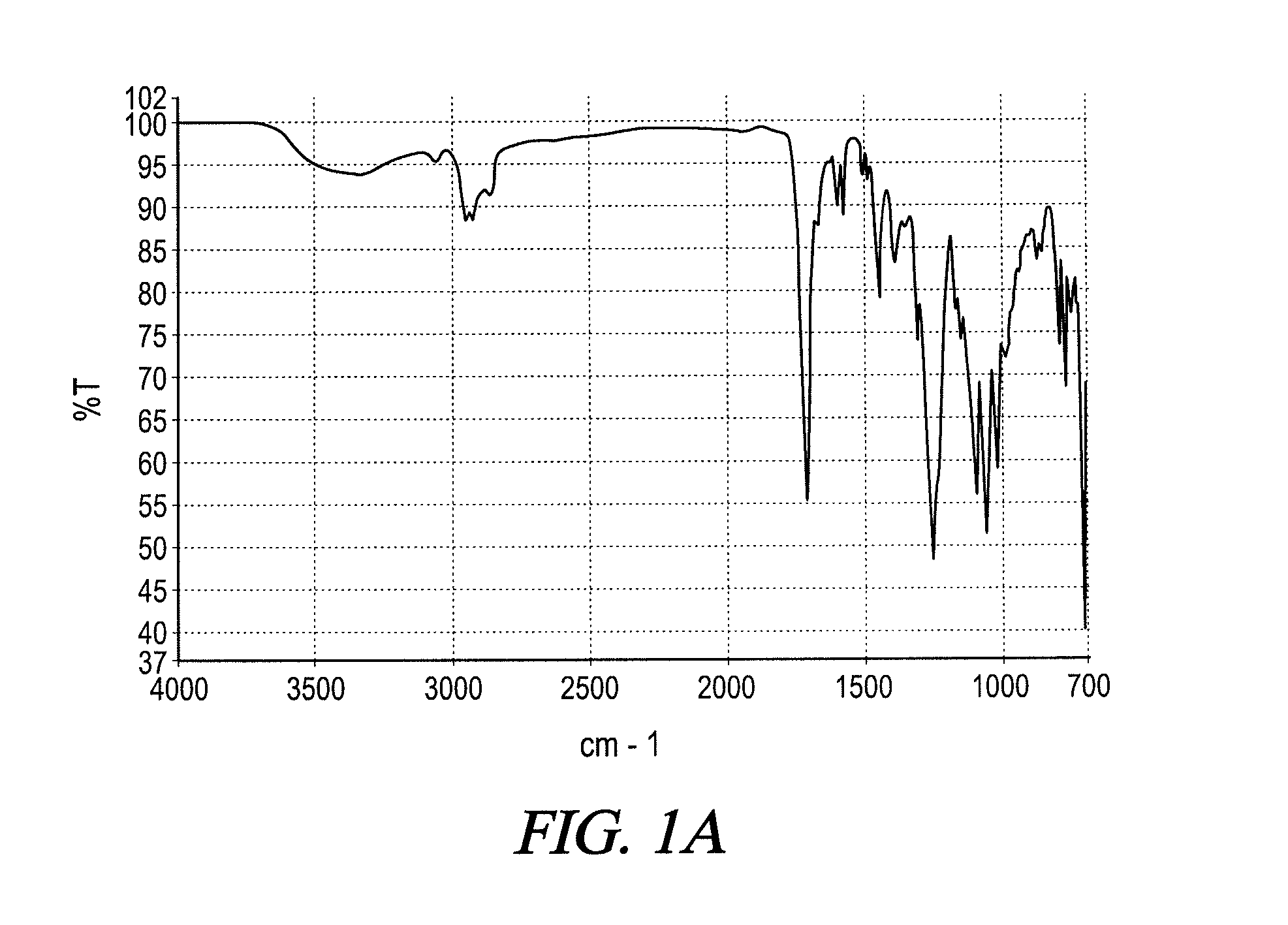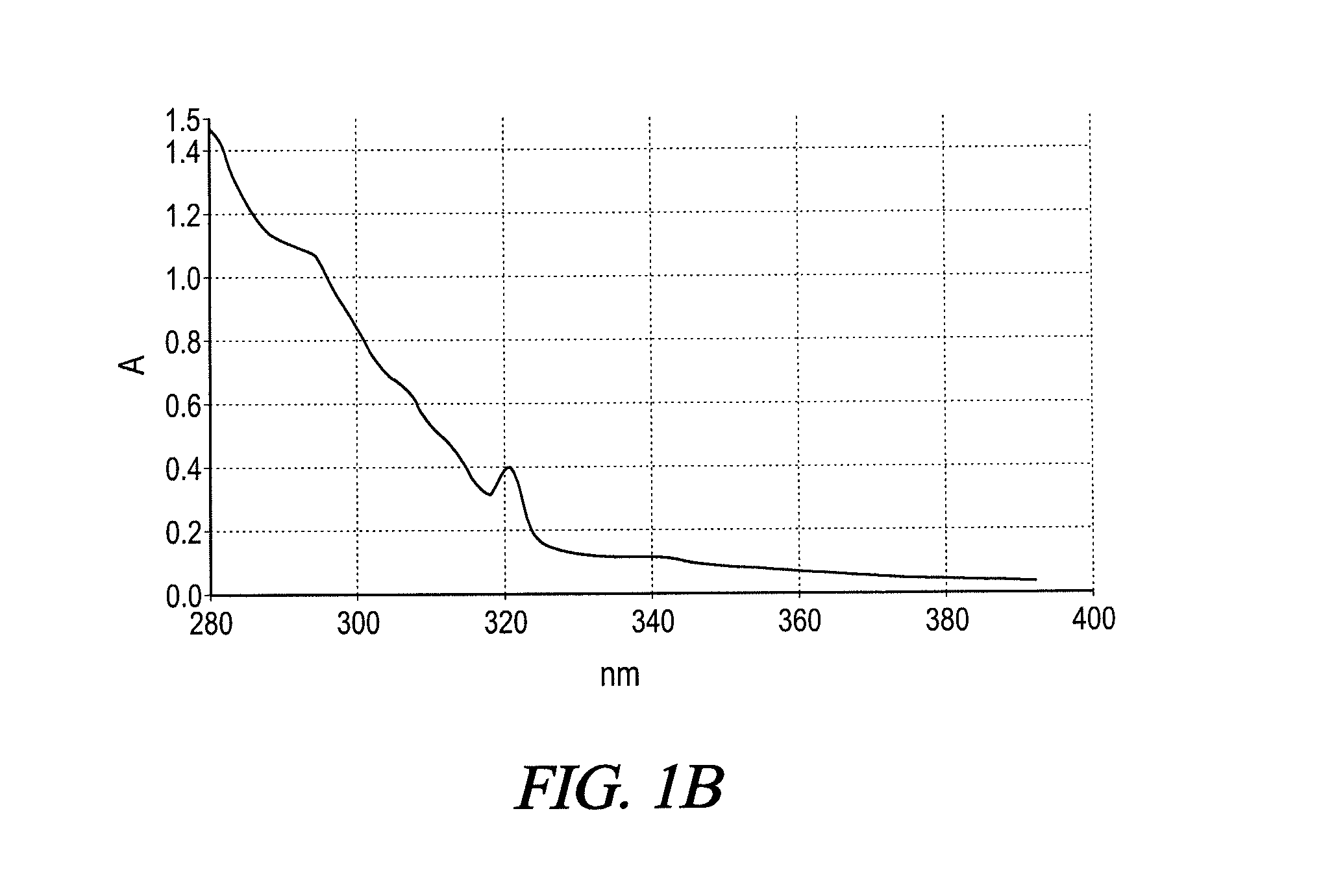UV absorbing complex polyester polymers, compositions containing UV absorbing complex polyester polymers, and related methods
a polyester polymer and complex technology, applied in the direction of aerosol delivery, antibacterial agents, metabolism disorders, etc., can solve the problems of skin damage, uv-b wavelengths longer wavelengths (known as uv-a) with a range of 320 to 400 nm, etc., to increase the spf or uv-a protection, the effect of increasing the photostability of the personal care composition
- Summary
- Abstract
- Description
- Claims
- Application Information
AI Technical Summary
Benefits of technology
Problems solved by technology
Method used
Image
Examples
example 1
Preparation of Inventive UV Absorbing Complex Polyester Polymer Containing a Benzophenone Group, a Naphthalene Group, and which can be Made Water Dispersible by Neutralization with a Base in Accordance with Scheme 1
[0080]To a stirred batch round bottomed glass laboratory reactor with heating capability via an electrically heated mantle, inert gas sparging capability, vapor column, total condenser and receiver, 426 grams butylethylpropanediol (BEPD), and 840 grams of propylene glycol dibenzoate were added, the propylene glycol dibenzoate acting as a reaction solvent The mixture was heated to about 90° C., and 394 grams of benzophenone tetracarboxylic acid dianhydride (BTDA) were slowly added. The mixture was heated to about 135° C. and held until the acid value stalled indicating the completion of the anhydride ring-opening reaction between the BTDA and the BEPD leading to an acid functional UV absorbing complex polyester polymer containing a benzophenone group. No water of reaction ...
example 2
Preparation of Inventive UV Absorbing Complex Polyester Polymers in Accordance with Schemes 7 and 6
[0082]To prepare a linear UV absorbing complex polyester polymer in accordance with Scheme 7, to a stirred batch round bottomed glass laboratory reactor with heating capability via an electrically heated mantle, inert gas sparging capability, vapor column, total condenser and receiver, 584 grams of a mixture known as dibasic ester (“DBE”) consisting of methyl esters of hexanedioic acid, butanedioic acid, and pentanedioic acid in an approximate weight ratio of 1:1:3 were charged. To the reactor, 996 grams of 1,6-hexanediol were then charged. The mixture was heated to about 120° C., and 2,590 grams of benzenepropanoic acid, 3-(2H-benzotriazol-2-yl)-5-(1,1-dimethylethyl)-4-hydroxy-, methyl ester were than slowly added. A small quantity of transesterification catalyst was added, and the mixture was heated to about 230° C. As transesterification progressed, by-product methanol was collected...
example 3
Photostabilization Analysis Using Method of Stanfield
[0085]A test protocol has been developed and is widely used within the industry to test the photostability of sunscreens in-vitro (the method of Stanfield, et. al.) An index of photostability, β, has been developed and defined and is based on a model of the relationship between the applied UV dose and the UV dose transmitted by a typical sunscreen applied to a PMMA substrate. The sunscreen is irradiated and the UV absorbance is measured, before and at intervals during irradiation, and is used to compute the transmitted UV dose corresponding to each applied dose. The SPF is defined as the cumulative applied dose in MEDs (minimum erythemal dose,) when the transmitted dose reaches 1 MED (20 effective mJ / cm2). This corresponds to the SPF measured in the in-vivo test. Note that for a typical solar simulator a dose of 1 MED is approximately 2.45 J / cm2. A least-squares curve fit of applied UV dose vs. transmitted UV dose yields a power e...
PUM
| Property | Measurement | Unit |
|---|---|---|
| wavelength range | aaaaa | aaaaa |
| wavelengths | aaaaa | aaaaa |
| critical wavelength | aaaaa | aaaaa |
Abstract
Description
Claims
Application Information
 Login to View More
Login to View More - R&D
- Intellectual Property
- Life Sciences
- Materials
- Tech Scout
- Unparalleled Data Quality
- Higher Quality Content
- 60% Fewer Hallucinations
Browse by: Latest US Patents, China's latest patents, Technical Efficacy Thesaurus, Application Domain, Technology Topic, Popular Technical Reports.
© 2025 PatSnap. All rights reserved.Legal|Privacy policy|Modern Slavery Act Transparency Statement|Sitemap|About US| Contact US: help@patsnap.com



